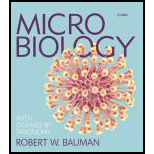
In a single day, two 19-year-old women and one 20-year-old man sought treatment at a university health clinic, complaining of acute diarrhea, nausea, and vomiting. No blood was found in their stools. One of the women was found to have a urinary tract infection. All three had eaten lunch at a nearby health food store the previous day. The man had a sandwich with tomato, avocado, sprouts, pickles, and sunflower seeds. One woman had a pocket sandwich with turkey, sprouts, and mandarin oranges; the other woman had the lunch special, described in the menu as a “delightful garden salad of fresh organic lettuces, sprouts, tomatoes, and cucumbers with zesty raspberry vinaigrette dressing.”All had bottled water to drink.
- 1. Which of the foods is the most likely source of the infections?
- 2. What media would you use to culture and isolate enteric contaminants in the food?
- 3. Which enteric bacteria could cause these symptoms?
- 4. How did the woman likely acquire the urinary tract infection?
- 5. What is the likely treatment?
- 6. What steps can the food store’s manager and the students take to reduce the chance of subsequent infections?
Want to see the full answer?
Check out a sample textbook solution
Chapter 20 Solutions
Microbiology with Diseases by Taxonomy (5th Edition)
- 18. Watch this short youtube video about SARS CoV-2 replication. SARS-CoV-2 Life Cycle (Summer 2020) - YouTube.19. What is the name of the receptor that SARS CoV-2 uses to enter cells? Which human cells express this receptor? 20. Name a few of the proteins that the SARS CoV-2 mRNA codes for. 21. What is the role of the golgi apparatus related to SARS CoV-2arrow_forwardState the five functions of Globular Proteins, and give an example of a protein for each function.arrow_forwardDiagram of check cell under low power and high powerarrow_forward
- a couple in which the father has the a blood type and the mother has the o blood type produce an offspring with the o blood type, how does this happen? how could two functionally O parents produce an offspring that has the a blood type?arrow_forwardWhat is the opening indicated by the pointer? (leaf x.s.) stomate guard cell lenticel intercellular space none of thesearrow_forwardIdentify the indicated tissue? (stem x.s.) parenchyma collenchyma sclerenchyma ○ xylem ○ phloem none of thesearrow_forward
- Where did this structure originate from? (Salix branch root) epidermis cortex endodermis pericycle vascular cylinderarrow_forwardIdentify the indicated tissue. (Tilia stem x.s.) parenchyma collenchyma sclerenchyma xylem phloem none of thesearrow_forwardIdentify the indicated structure. (Cucurbita stem l.s.) pit lenticel stomate tendril none of thesearrow_forward
- Identify the specific cell? (Zebrina leaf peel) vessel element sieve element companion cell tracheid guard cell subsidiary cell none of thesearrow_forwardWhat type of cells flank the opening on either side? (leaf x.s.) vessel elements sieve elements companion cells tracheids guard cells none of thesearrow_forwardWhat specific cell is indicated. (Cucurbita stem I.s.) vessel element sieve element O companion cell tracheid guard cell none of thesearrow_forward
- Health Safety And Nutrition F/Young ChildHealth & NutritionISBN:9781305144767Author:MAROTZPublisher:Cengage
- Essentials of Pharmacology for Health ProfessionsNursingISBN:9781305441620Author:WOODROWPublisher:Cengage





